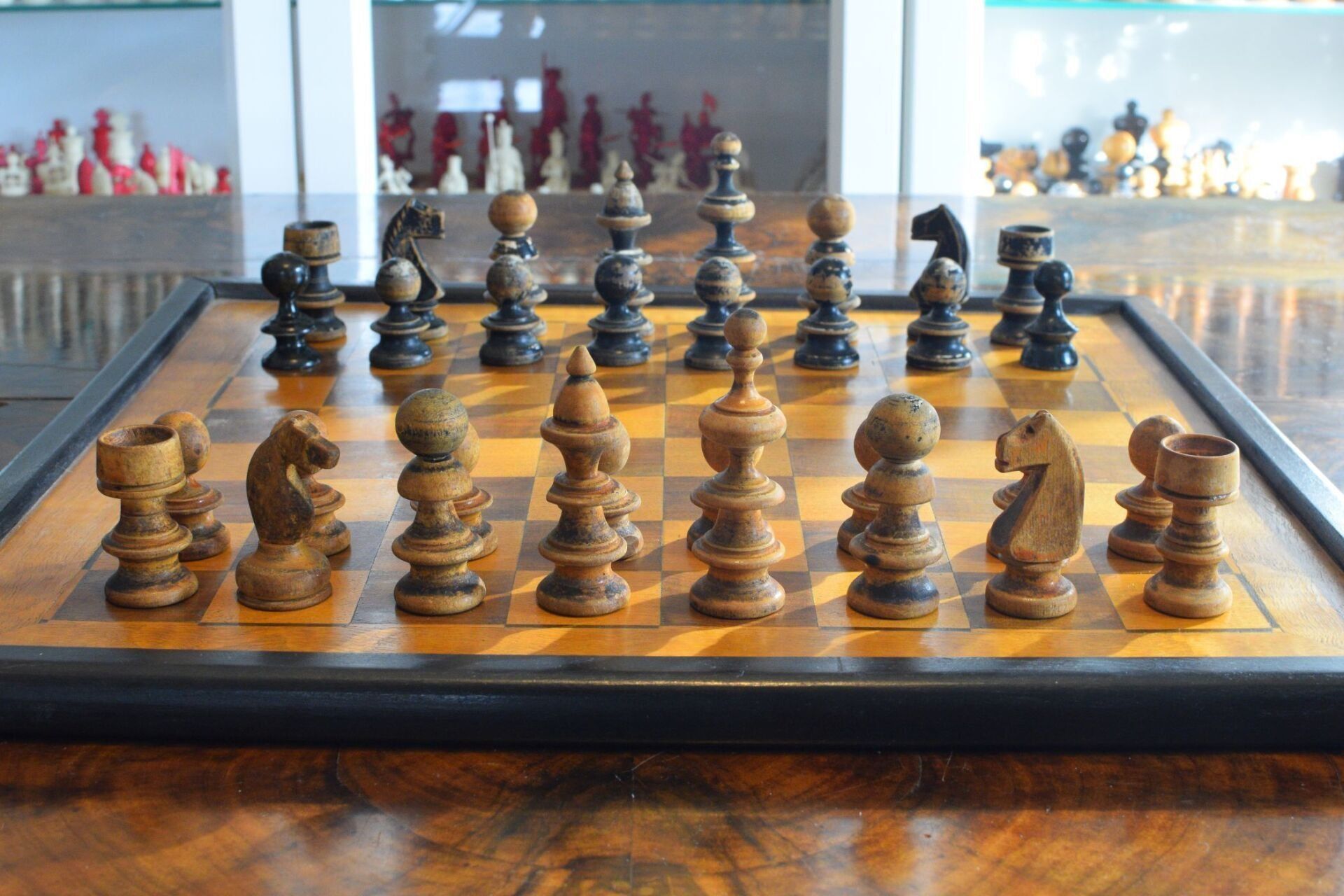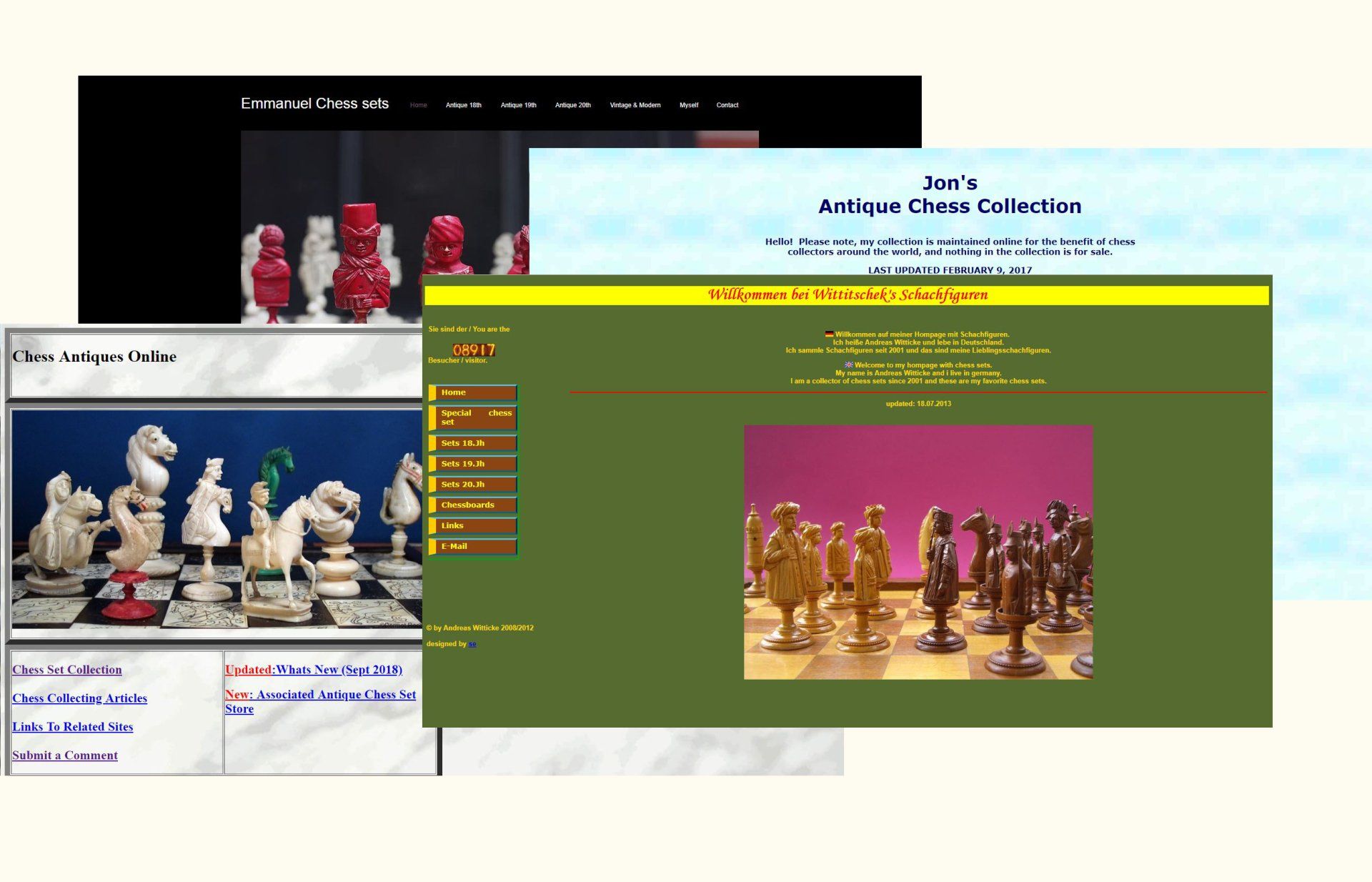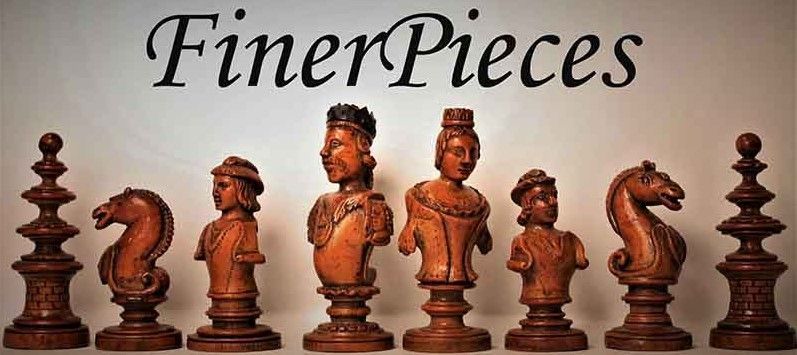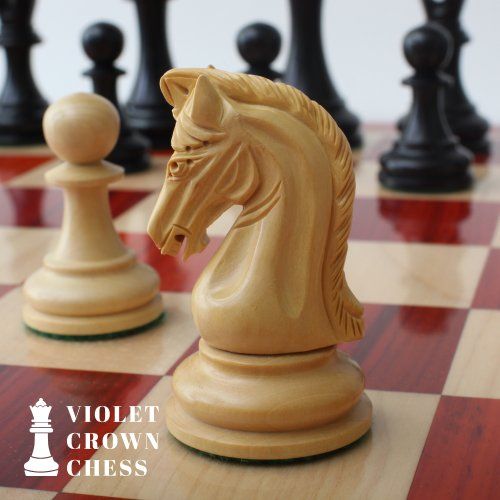Indian Export Ivory Chess Set, Vizagatapam, ca. 1830
Indian export ivory set supposedly from Vizagatapam dating to the early / mid 19th century, probably ca. 1830. King size is 11.4 cm (ca. 4.5"). One side stained in brown, the other side left natural. The set is richly decorated. Taking both the age and the fragility of the intricate carving into account, it is in overall good condition despite a few minor damages. The chessmen with extensive foliate decoration. Kings with pierced gallery and foliate crown, the Queens similar, but of smaller size. The Bishops with pierced mitres. The Knights as horses' heads. The Rooks of unusual slender form with galleried stems and a dome finial. The Pawns with foliate baluster knops. All pieces with circular petal rimmed bases.
English influence in India goes back to the 17th century. An East India Company factory was established at Vizagatapam, located on the Indian east coast midway between Madras and Calcutta, in 1668. Following the settlement, an ivory industry catering for European tastes emerged in Vizagatapam in the first half of the 18th century and subsequently, in 1757, also in Murshidabad, the capital of Bengal some 100 miles north of Calcutta, and in Berhampore, respectively. Murshidabad was the seat of the government of the Nawabs of Bengal from about 1700. Berhampore was constructed as a barracks town a little south of Murshidabad in 1765-1767 after the British victory at Plassey (cf. Michael Mark, Antique Indian Chess Sets, published by Förderkreis Schach-Geschichtsforschung e.V., 1997, p.31, 45).















